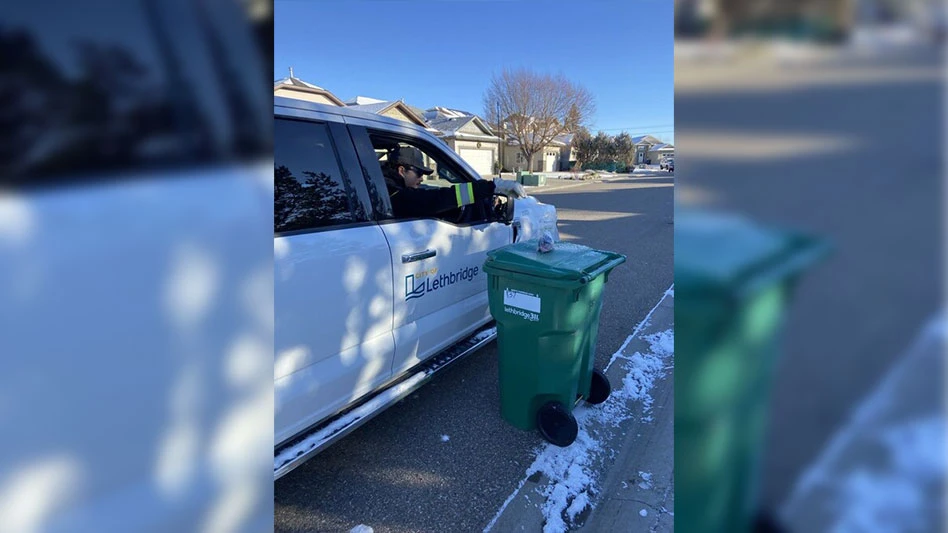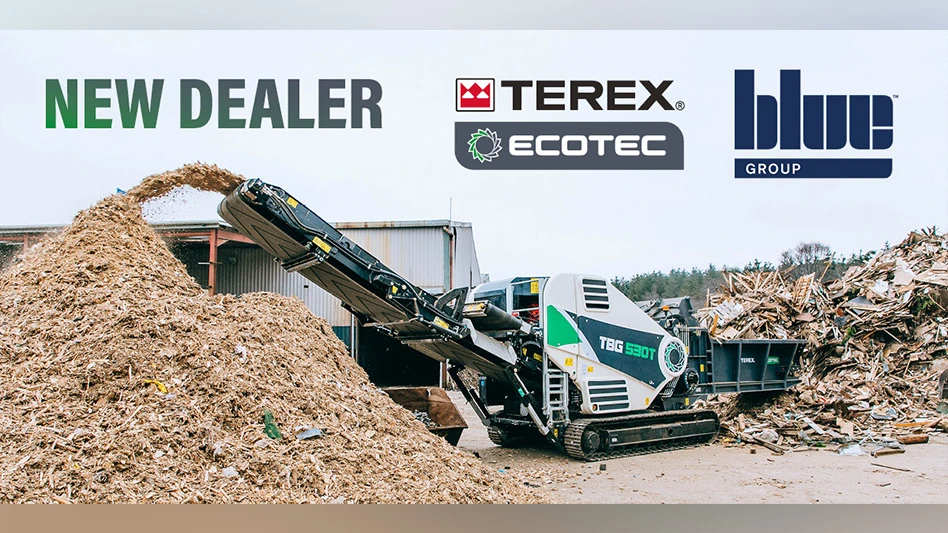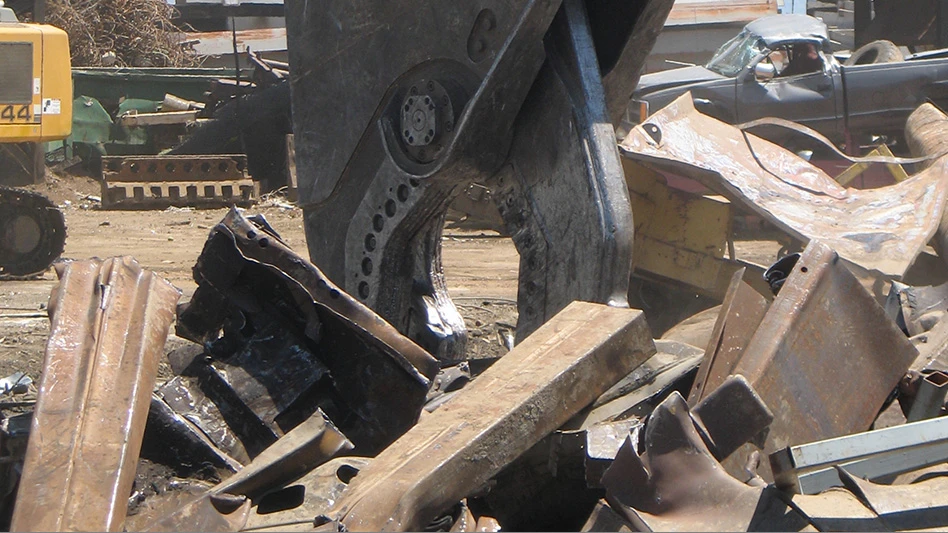For the first few days it was fun, driving around in the big white truck with the red and blue lettering that spelled his company’s name and listed his 1- (800) number and Web site URL. He’d drop by the Stewed Bean, read the paper and sip lattes with the regulars. Most of them stared at his big truck, but not one of them asked him what on-site shredding was all about.
At the end of the first week when his wife asked how sales were going, Chet mumbled an incoherent reply and changed the subject. By Friday of the second week, worry set in. Big time. "Maybe this shredding thing isn’t all it’s cracked up to be," he thought.
The franchise people had made it sound easy. But in the 10 sales calls he had made, his reception had been less than cordial. He was scared. To talk about hiring a professional service to shred sensitive and confidential documents was one thing, but, in real life, in-office shredders were chewing him up.
This was his mood when he pulled into the service station to check his oil and tires. Again. He knew he had to really start selling things, he just didn’t know how. Oh well, come Monday morning, he thought, he’d hit it hard and stick with it no matter what his reception.
"Friday afternoon’s good selling time," said the guy in the white shirt at the pump next to his. "Friday the boss is often the only one in the business and he has time to listen to your story."
Startled, Chet replied, "Does it show that much?"
"I’ve seen friendlier faces on a bankruptcy judge," he said. "Tough week?"
"Two of ‘em," Chet replied.
The guy looked at his watch. "We’ve got time to make a few calls. On the way you can tell me all about it. I’ve been selling for 25 years, so I’ve heard it all."
Sales Lubricate ShredderS
"The most important part of any business is a consistent supply of sales," says Donald Trump, in The Art of the Deal. Mr. Trump is not alone in this belief.
"The x-factor of success in business, regardless of industry," writes Robert W. Bly, "is sales. That starts the cash flow flowing. It’s more difficult to sell yourself and your company than most people think. Yet, if success is to visit you, it comes through sales."
Tom Caso, general manager of Shred-It San Diego, (www.shredit
sd.com), one of the largest document destruction firms in Southern California, echoes this reality. "The life blood of any business is sales. Without ongoing sales there is no revenue source. No revenue, no business. This is true in any industry, including ours."
Put another way, those shiny trucks and latest and greatest shredders all must be fed a steady diet of sales. Industry insiders say that the average shredding truck should net a minimum of $1,150 per day, or $25,300 per month. The value of consistent sales is easy to see.
Executives in service industries such as shredding are aware of the importance of mounting and maintaining a sales effort. Part time sales efforts seldom reap worthwhile results. Intermittent effort generates indeterminate results, if any.
This is tight hoop for many to jump through. They protest they only have to do bookkeeping once a week or truck preventative maintenance once a month, so why must they sell every day?
"Sales is a different discipline," says Tom Gibson, specialty sales coordinator of DixieLine Lumber and Home Centers, San Diego. "It’s not better than other disciplines—just different. As the old adage goes: ‘Selling is like shaving. You have to do it everyday or soon you look like a bum.’"
SETTING UP THE SALES SHOP
"Okay," you say, "I’m convinced. I need to start selling on a regular basis. But, I still don’t know what to do. And I don’t have a lot of money—and even less time. What can I do that will get me the largest return in the fastest time?"
Good question! We’ll start with what I call the Big 10. That is, 10 things you must get in place so you can launch a million-dollar sales effort on a limited budget. These 10 things are:
1. Work in an interruption-free place.
This is important. You’ll be rewarded with more and better production, even if you are the only salesperson!A printing salesman told me, "My company emphasizes sales. So where do we work? So where are the desks? Mine is in a narrow hallway. When they wheel paper into the press, I have to move my chair. This happens at least three times a day. Our other salesperson’s desk is in a converted broom closet, next to the coffee pot where interruptions are constant."
2. Know your prospect.
No, every business is not your prospect! That’s as preposterous as saying every car and truck on the highway uses the same gas. In reality, is your ideal customer an attorney? A bookkeeper? Firms with 10 or more employees? Knowing your target customer is vital to sales success.Here’s a good definition of a prospect, which might prove helpful: A prospect is a business entity who will listen, can buy and will pay for your goods or services. Where do you find these people? Most public libraries have access to Reference USA, a database of firms listed by industry. The price? The cost of a library card, as in free.
3. Divide your territory into chunks.
How do you eat a water buffalo? One bite at a time. But first you must have the buffalo! How do you call on every business in your territory? You don’t. You divide the territory into bite-sized chunks (such as by potential buying units) and call on your most logical prospect first.Or break it into industries served. List attorneys, accountants, dog catchers—whichever one you believe is your most profitable prospect. Failure to follow this simple exercise has doomed many a sales effort. Why? Doubt and indecision crystallize and the two become fear. Inaction wins.
4. How will you contact your prospect?
Now that you know who your prospect is, the question becomes, how? How are you going to contact them? In-person cold calls? Direct mail? Phone calls? Whichever method you decide on, remember the repeated drips of water carved the Grand Canyon. Set a reachable daily goal, say 25 calls. Stay in the field until you reach it. By week’s end, you’ll have contacted 125 prospects and be on your way to opening accounts.5. Know what to say.
List the real and intangible benefits that separate you from your competition. (These are your key selling concepts.) And remember, service is not a concept unique to you and your firm, so don’t list it as a key selling concept! An investment in brain sweat now will reap real rewards later.Jack Llewelyn, of JEL Concepts, a marketing firm in Southern California (www.jelconcepts.com) says, "Few salespeople take the time to write out and memorize an initial sales opening. They fumble and mumble, and when their prospect says, ‘No,’ they complain that the economy is bad or that people are too dumb to recognize the value of what they sell."
I’ve watched in horror as a salesperson jams a business card into a prospect’s hand within three seconds of the sales call and then bores him to tears by recounting shredder speeds and baler size. When the prospect’s eyes glaze over, and he manages to interrupt long enough to blurt out, "We’re not interested," the salesperson is always surprised.
What if that salesperson said: "Hello. I’m Sam the Shredder man with XYS Shredders, which you no doubt know is a leader in the document destruction industry. Recent changes in state law dictate new shredding standards for sensitive and confidential material. Employee pay records and other financial information fall into this category. Who in your organization is responsible for disposing of confidential and sensitive materials?"
If the salesperson listens to what the prospect now says, and responds appropriately, a sale is in the making!
6. A method for easy record keeping and results follow up.
You don’t need a computer and expensive software to keep good records. If you have these, fine. If not, a supply of 3-inch by 5-inch cards, a shoe box to put them in, cards numbered 1 through 31 and 12 cards showing the months of the year gives you a simple tickler system, which will do fine until cash flow allows for a computer.Know your numbers! Numbers are your friend. How many calls do you average to arrange an appointment? How many appointments result in presentations? How many presentations to result in a sale? Be scrupulously accurate in your record keeping.
7. A list of benefits your service provides. It doesn’t have to be a fancy brochure.
A list on colored paper describing five or six benefits your customers enjoy is great, as long as it carries your name, cell phone and Web address. Any good office supply store has enough paper choices to give you a headache. Place a couple of news articles on the perils of identity theft, corporate espionage and intellectual property loss in a nice folder and you have great, affordable sales visuals.8. What do you say after you say "Hello?"
How about this? "If there was the possibility that I could save you 25 percent or more on your monthly shredding bill, would you at least listen to what we do and how we do it?" Questions sell. Give it a try and see.9. Have an elevator talk.
A 30-second sound bite, or elevator talk, quickly describes your business in a favorable light. Keep it simple. Shred-it San Diego’s salespeople say, "Our business is to ensure that nobody knows your business." This is followed with two questions: "What would be the cost to your firm in hard dollars if confidential product information fell in the hands of a competitor? What if sensitive employee documents were confiscated from your trash and a lawsuit ensued?"10. Record appointments and comments.
Ever use a calendar? A Franklin Quest organizer? A Day Timer? A Day Runner? A PDA? Whatever your selection, wise time management is a daily challenge.There you have it. Ten simple (but not necessarily easy) steps to launching a million-dollar sales effort for a document destruction company on a 10-cent budget.
What about Chet, the guy who found his answers in a gas station? Well, that was total fiction. Sales happen only when you cause them to happen! n
The author is director-business development for Shred-It San Diego. He can be reached at Pete9391@hotmail.com or at (760) 445-0659.

Explore the August 2004 Issue
Check out more from this issue and find your next story to read.
Latest from Recycling Today
- Phoenix Technologies closes Ohio rPET facility
- EPA selects 2 governments in Pennsylvania to receive recycling, waste grants
- NWRA Florida Chapter announces 2025 Legislative Champion Awards
- Goldman Sachs Research: Copper prices to decline in 2026
- Tomra opens London RVM showroom
- Ball Corp. makes European investment
- Harbor Logistics adds business development executive
- Emerald Packaging replaces more than 1M pounds of virgin plastic





